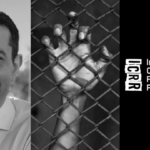Hamlin Fistula Ethiopia: Helping Vulnerable Girls and Women

Imagine being married off to a man much older than you while still a young teenager. Then, imagine getting pregnant, in a community with little access to technology or modern medicine to assist in a successful childbirth.
This is the fate of many women in Asia and sub-Saharan Africa. Sadly, many of those who become pregnant do not have an easy time giving birth, and if they are unfortunate enough to be one of the 5% of women who suffer obstructed labour, it can take days.
During this time, the baby’s head is often pushed against the mother’s pelvic bone and the blood flow in tissues in between is stopped. When this happens, the delicate tissue can die, causing a fistula, or an opening between the mother’s bladder and vagina, or between the vagina and rectum.
The baby often dies, and the fistula leads to permanent incontinence and, often, ostracism from the community. Husbands frequently abandon their wives due to their smell and inability to bear any more children. Women may spend large amounts of money on perfume to try and cover the smell, and some cannot even sit down or stand up without leaking.
For many women, getting a fistula signals a dramatic and permanent change in social status. When status can depend on the ability to marry and have children, these unfortunate women are often shunned by husbands, families and the community alike.
A fistula also lead to further health problems, like skin infections, kidney disorders or even death if it is not treated.
What is Hamlin Fistula Ethiopia?
Australian obstetrician-gynaecologist Catherine and her husband Dr Reg Hamlin worked with Ethiopian women suffering from fistulas for decades. In 1974, confronted with the many Ethiopian women who had been ostracised, in pain and incontinent due to developing a fistula, they established Hamlin Fistula Ethiopia.
The Addis Ababa Fistula Hospital was established, and it is the world’s first fistula hospital. Women suffering from obstetric fistula can come here to be treated for free.
Many doctors in Ethiopia thought the problem was untreatable, and in fact discouraged other doctors from trying to operate on women with fistulas.
Now, over 700 Ethiopians are employed by Hamlin Fistula Ethiopia – and the charity is headed by founder Dr Catherine Hamlin and CEO Mr. Martin Andrews. These 700 workers include cooks, drivers, cleaners, seamstresses, teachers, nurses and of course fistula surgeons.
With the surgery, approximately 80-95% of vaginal fistula can be closed.
Hana’s story
One of the many success stories of Hamlin Fistula Ethiopia is Hana. Hana was 19 when she first became pregnant, but her labour lasted for 6 days and her baby was stillborn. She suffered from a fistula that did not heal and she found it impossible to keep clean.
Hana’s husband left her, and she spent two years hoping to get better before she heard of a hospital which might be able to help her. Hana’s brothers carried her to the hospital, and she was cured after a single operation.
You can read about other girls who were cured by Hamlin Fistula Ethiopia here.
What can I do?
According to the World Health Organisation, obstetric fistula affects between 50,000 and 100,000 females each year. While the condition is largely unheard of in the Western world, it is estimated that over 2 million young women in Asia and sub-Saharan Africa live with this preventable condition.
Our self-funded charity, the SCL Help Fund, is proud to donate $1,000 to Hamlin Fistula Ethiopia, which is the annual cost of accommodating a long-term resident at Desta Mender, a farm and training centre for long-term patients.
However, as little as $10 will buy five pairs of slippers for patients who do not have shoes, and $50 will pay for long-term physiotherapy.
You can make a donation to Hamlin Fistula Ethiopia if you wish to do so by clicking on this link.






